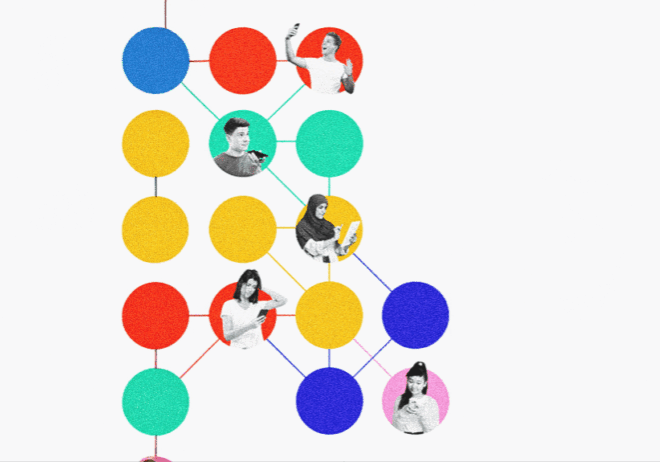
How UX Design Is Building Trust Through Transparency and Data Ethics in 2025
Isn’t it true? You land on a website, a friendly chatbot pops up, and before you can even say “Hi,” it asks for your name, email, phone number, and location. Nope. You click away. Fast. That’s the thing with trust—it’s earned, not assumed. Users in today’s digital world are more astute, doubtful, and concerned about their privacy. That’s why UX design is evolving.
Transparency and data ethics aren’t back-end responsibilities—they’re front-end experiences. They’re part of the user interface now. Nowadays, pop-ups, permissions, and cookie banners serve as trust tests rather than merely being legal checkboxes. The way your trust signals are designed will determine whether someone stays or leaves.
Let’s dive into how smart UX today isn’t just about pretty layouts, but ethical blueprints.
The UX of consent: From fine print to frontline
You’ve seen it. The “Accept All Cookies” banner sneaks in without telling you what you’re agreeing to. Sounds shady, doesn’t it?
People want options now, not coercion wrapped in an easy-to-use UI. As a result, designers are moving toward informed consent. Just having a privacy policy is insufficient. It must be readable, intelligible, and—wait for it—aesthetically pleasing.
Think about sliders for toggling cookie preferences. Visual breakdowns: “We use your data to improve ads ✕ | personalize content ✓”
Permission should not feel like a trap but rather like a dialogue.
Let’s talk about the pro tip: Instead of burying “learn more” links, bring data use into the spotlight with tooltips, plain language, and simple visuals. Asking for permission isn’t enough; you also need to explain why it’s important.
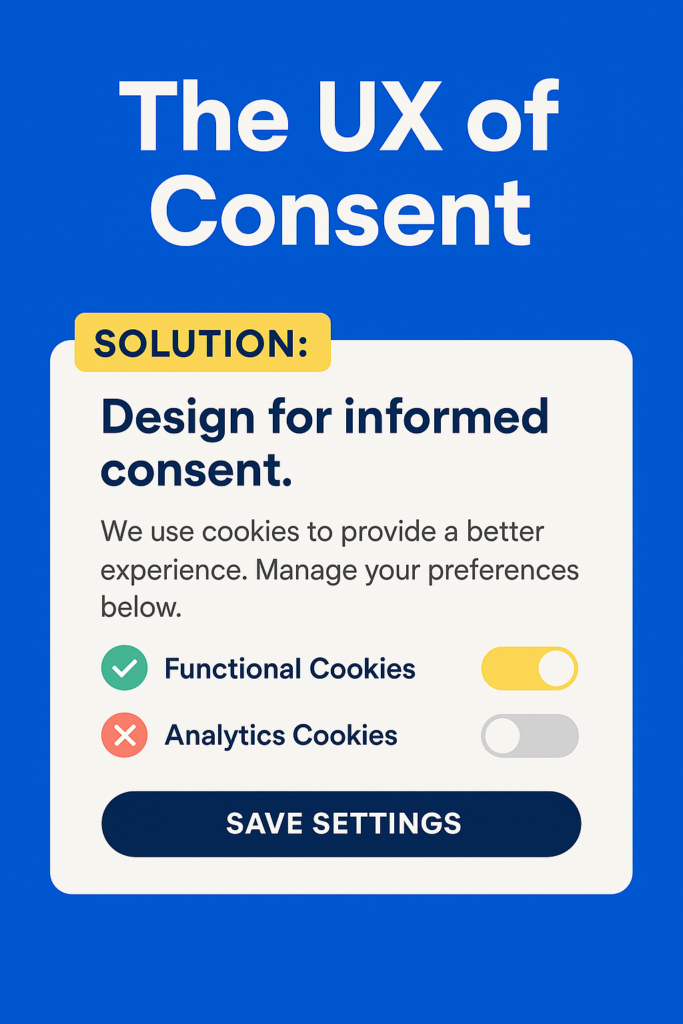
Let users see what you see
Want to build trust? Let users see what you see.
Designers are now creating dashboards that allow users to update or remove data as well as see what data has been gathered and how it is being used. This turns abstract privacy into something users can interact with.
For example, Spotify lets users check their listening data (which also doubles as fun content—hello, Spotify Wrapped!). Google offers detailed account activity logs. These aren’t just tools—they’re UX-based trust builders.
Ask yourself: What if your brand visualized data transparency the way it visualizes engagement? Try this: A “My Data” tab that offers edit access, real-time analytics, and even gamified features (“You’ve restricted ad tracking for three apps”). Great job protecting your privacy!”).
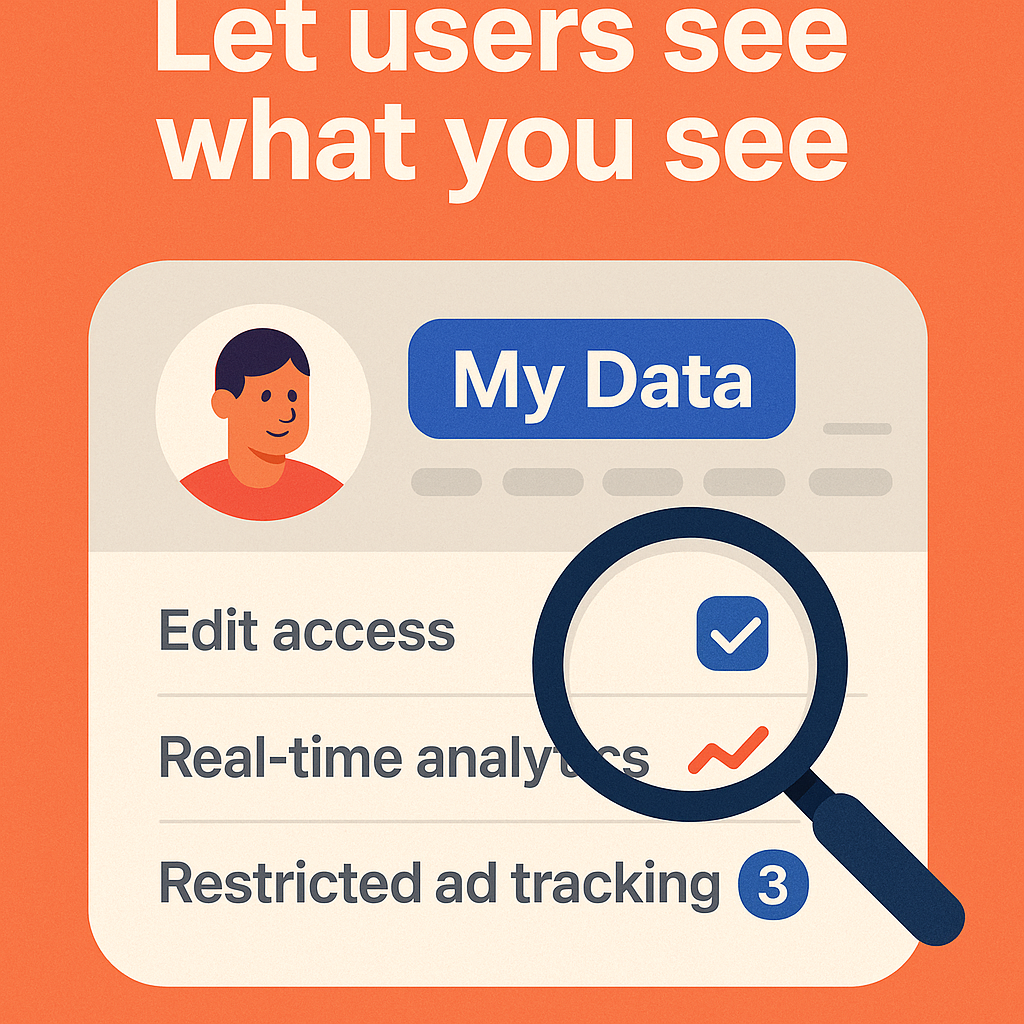
The ethics layer: Design that doesn’t trick
Dark patterns—those deceptive UX tactics that push users into saying yes—are going out of style fast. You know them: the “no” button hidden in gray text, the guilt-trippy copy like “No thanks, I love wasting money.” That kind of manipulation erodes trust.
Regulations such as California’s CPRA and the GDPR are becoming more stringent. However, there is a growing trend in UX toward ethical design that goes beyond legality. It’s about treating users with enough respect to offer them genuine options.
That means rethinking defaults. Making opt-outs as easy as opt-ins. And avoiding any kind of trickery masked as design. Spoiler: You may get fewer sign-ups with ethical UX. But you’ll get more loyal users—and that’s the long game.
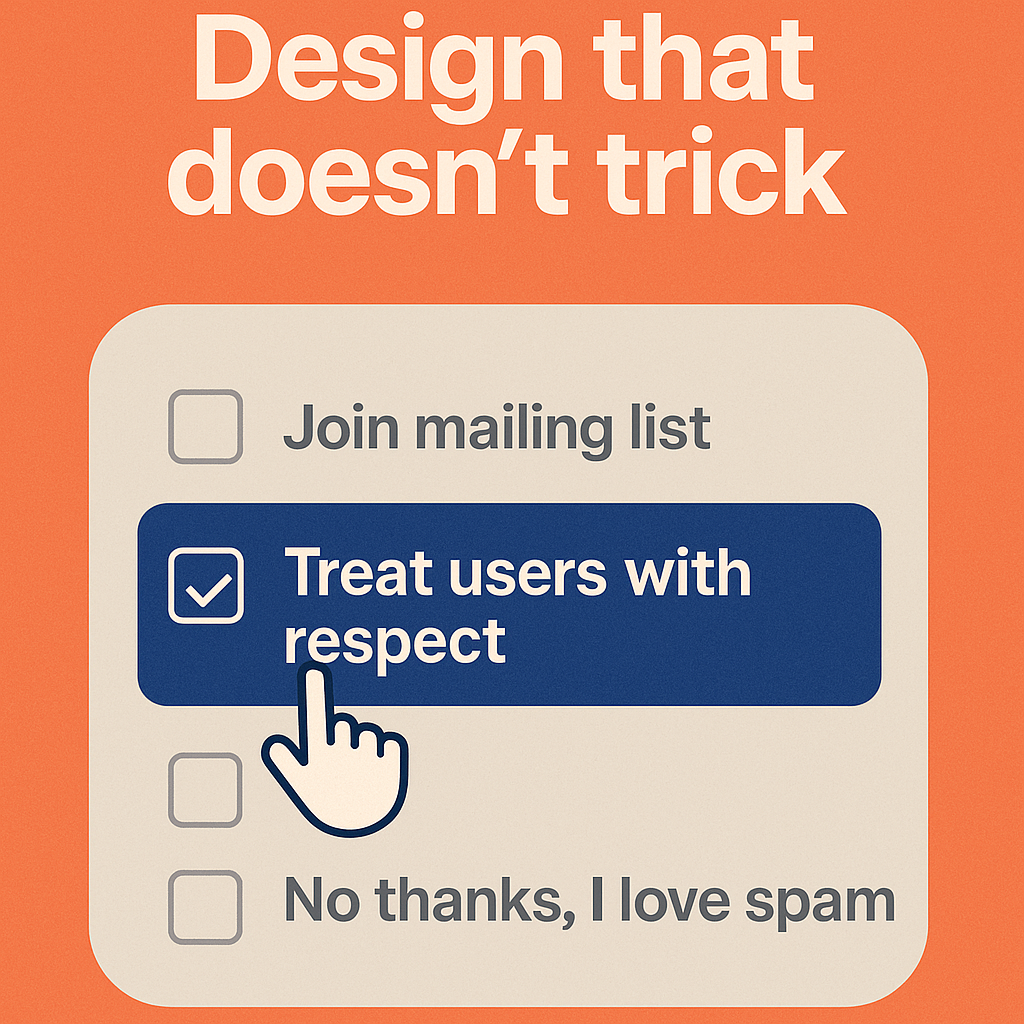
The new visual language of trust
How does trust look? Designers are leaning into new iconography and color schemes to signal privacy and transparency. Think of the green lock in your browser bar. Or the shield icon paired with account security settings. These visuals tap into emotional safety the way a “Buy Now” button taps into urgency.
Even microcopy is evolving. Compare this: “By using this app, you agree to our terms.” To this: “We only ask for what we need to make your experience better. Here’s how we use your data.” One feels robotic. The other feels human.
Creative idea: Develop a visual “trust badge” system on your app—custom icons that represent transparency features (“Data Editable,” “No Third-Party Sharing,” “Tracking Off”).
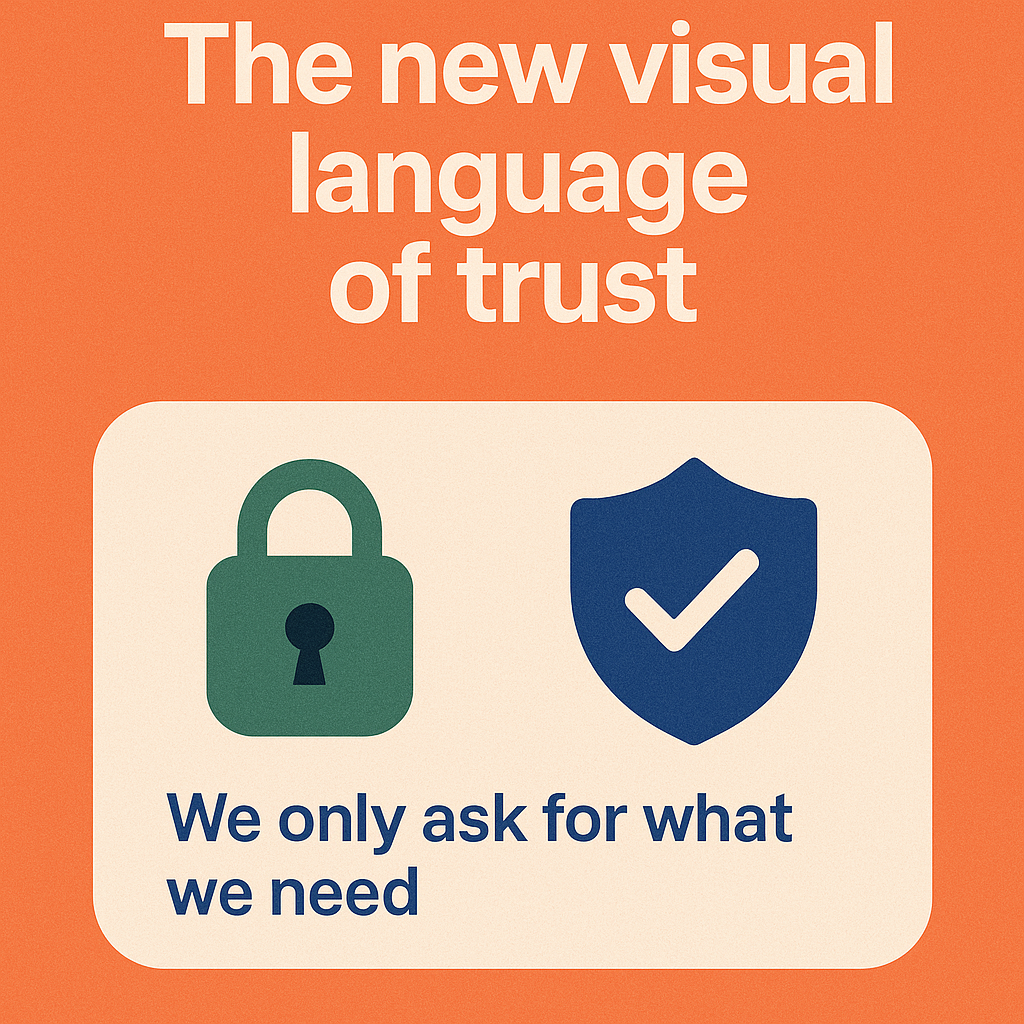
Put trust front and center in your product
Want to know what’s wild? Some of the most innovative startups today lead with privacy as a product feature. Look at Signal or ProtonMail—they market encryption as their USP. Even Apple has doubled down on privacy-focused campaigns, with billboards that scream, “What happens on your iPhone, stays on your iPhone.”
Users no longer see privacy as a back-end compliance box. They see it as a reason to choose you. In fact, a recent 2025 survey found that 48% of users have stopped buying from a company due to privacy concerns—proof that trust isn’t just nice to have, it’s essential to conversion. So why not make it part of your homepage, your onboarding, or your ads?
Rethink your flow: Is trust something users discover after they sign up? Or something they experience from the first click?
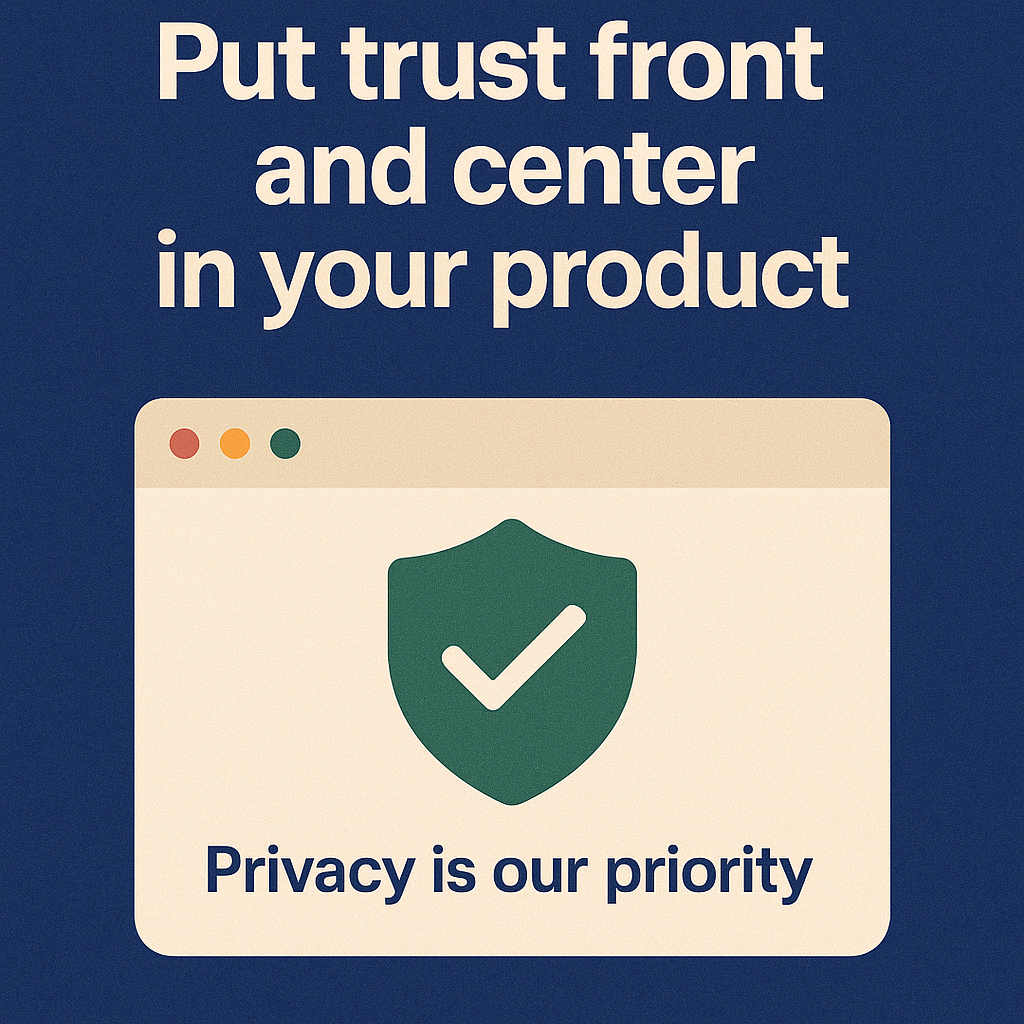
The trust toolkit for UX designers
In 2025, UX design must prioritize trust, and that starts with Data Minimalism—only ask for what’s truly needed. Avoid long forms and invasive questions. Use Plain Language so users understand what they’re agreeing to, not just skimming past legal jargon.
Design permission to be part of the experience—make it clear, clickable, and revocable. Add Delete and Edit Options to give users real control. Set Transparent Defaults so users don’t have to dig to protect their data. Above all, ensure that every design decision reflects your Visible Values, as trust is not alone established through features but also through intentionality.
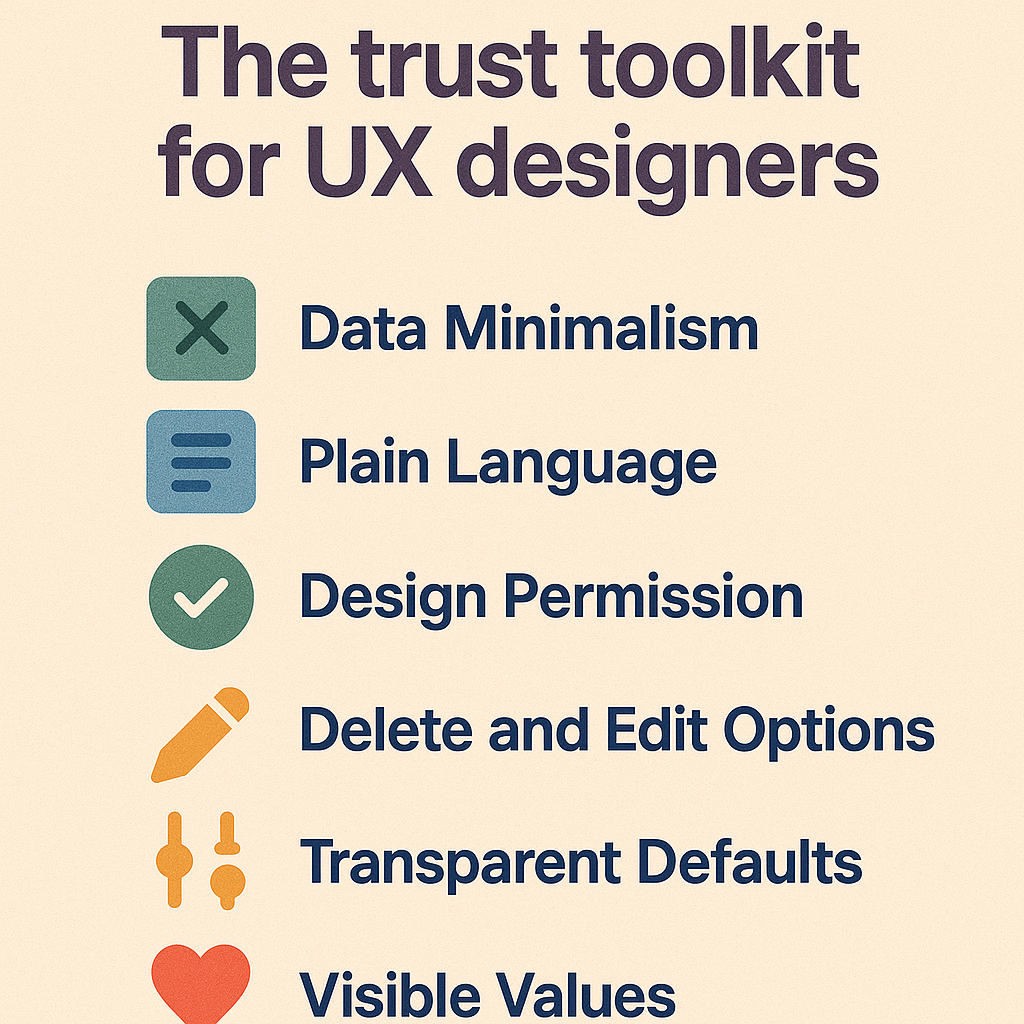
So, what’s the real job of a UX Designer now?
Today’s UX goes beyond flow, friction, and typography to include design for confidence. Each component should evoke a sense of control, safety, and respect. Nowadays, trust isn’t a bonus; it’s a baseline.
In a world flooded with AI, hyper-targeting, and endless data tracking, users aren’t just wondering, “Does this work?” They’re asking, “Can I trust this?” With each tap, swipe, and scroll, your design is already responding to that query, whether you are aware of it or not.
Cut to the chase
Design isn’t neutral. Every choice we make—what to show, what to hide, what to simplify—shapes the user’s understanding of what’s happening behind the screen. Transparency isn’t a popup. Data ethics isn’t a backend slide deck. They’re experiences. So, as you sketch your next wireframe, think less about the user journey… and more about the trust journey.

